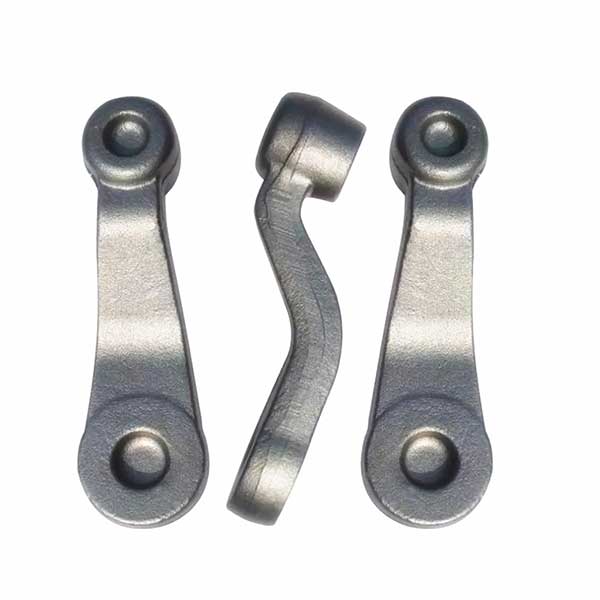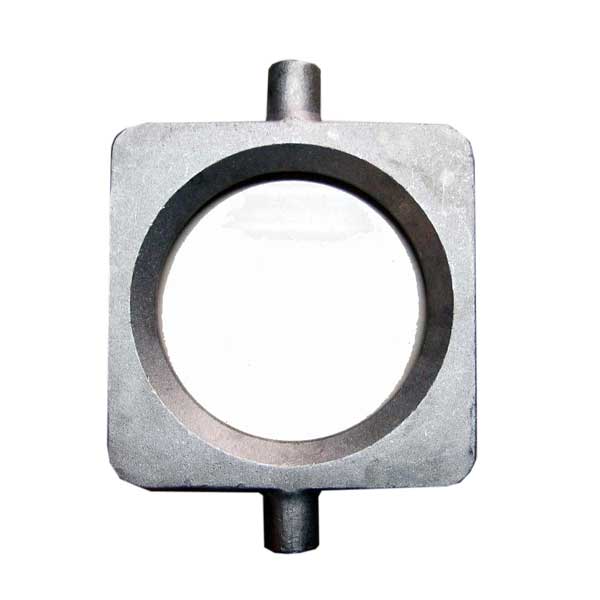WHAT ARE THE TYPES OF FORGING PROCESSES?
Forging is a processing method that uses a forging machine to apply pressure to a metal blank to plastically deform it to obtain a forging with certain mechanical properties, certain shape and size. Forging (forging and stamping) is one of the two major components. Through forging, defects such as as-cast looseness generated in the metal smelting process can be eliminated, and the microstructure can be optimized. At the same time, due to the preservation of the complete metal streamline, the mechanical properties of forgings are generally better than those of castings of the same material. For important parts with high load and severe working conditions in related machinery, forgings are mostly used in addition to rolling plates, profiles or welded parts with simple shapes.
The initial recrystallization temperature of steel is about 727 °C, but 800 °C is generally used as the dividing line, and hot forging is higher than 800 °C; between 300 and 800 °C, it is called warm forging or semi-hot forging. called cold forging.
Forgings used in most industries are hot forging. Warm and cold forging are mainly used for forging parts such as automobiles and general machinery. Warm and cold forging can effectively save materials.
PROCESS CLASSIFICATION
According to the forging temperature, it can be divided into hot forging, warm forging and cold forging.
According to the forming mechanism, forging can be divided into free forging, die forging, ring rolling and special forging.

1. FREE FORGING
It refers to the processing method of forgings that use simple universal tools or directly apply external force to the blank between the upper and lower anvils of the forging equipment to deform the blank to obtain the required geometric shape and internal quality. Forgings produced by the free forging method are called free forgings. Free forging is mainly based on the production of small batches of forgings. Forging equipment such as forging hammers and hydraulic presses are used to form and process the blanks to obtain qualified forgings. The basic processes of free forging include upsetting, drawing, punching, cutting, bending, torsion, offset and forging. Free forging is all hot forging.
Advantages: Free forging has the characteristics of flexible process, high versatility of equipment and tools, and low cost. Since free forging is formed gradually, the required deformation force is small, so it is the only way to produce large forgings (above 300T).
Disadvantages: low productivity, low precision forgings, high labor intensity, mostly used for single-piece and small batch production of forgings with simple shapes and low precision requirements.
2. DIE FORGING
Die forging is divided into open die forging and closed die forging. The metal blank is compressed and deformed in a forging die cavity with a certain shape to obtain a forging. Die forging is generally used to produce parts with small weight and large batches. Die forging can be divided into hot forging, warm forging and cold forging. Warm forging and cold forging are the future development direction of die forging, and also represent the level of forging technology.
According to the material, die forging can also be divided into ferrous metal die forging, non-ferrous metal die forging and powder product forming. As the name implies, the materials are ferrous metals such as carbon steel, non-ferrous metals such as copper and aluminum, and powder metallurgy materials. Extrusion should belong to die forging, which can be divided into heavy metal extrusion and light metal extrusion.
Closed die forging and closed upsetting are two advanced processes of die forging. Since there is no flash, the utilization rate of materials is high. It is possible to complete the finishing of complex forgings in one or several operations. Since there is no flash, the stressed area of the forging is reduced and the required load is also reduced. However, it should be noted that the blank cannot be completely restricted. For this reason, the volume of the blank should be strictly controlled, the relative position of the forging die should be controlled and the forging should be measured, and efforts should be made to reduce the wear of the forging die.

3. ROLLING RING
Ring rolling refers to the production of ring-shaped parts of different diameters through special equipment ring-grinding machines, and is also used to produce wheel-shaped parts such as automobile hubs and train wheels.
4. SPECIAL FORGING
Special forging includes roll forging, cross wedge rolling, radial forging, liquid die forging and other forging methods, which are more suitable for the production of parts with special shapes. For example, roll forging can be used as an effective preforming process to greatly reduce the subsequent forming pressure; cross wedge rolling can produce parts such as steel balls and drive shafts; radial forging can produce large forgings such as barrels and stepped shafts.
…
Details can be accessed by clicking here:https://www.gold-emperor.com/types-of-forging-processes/


